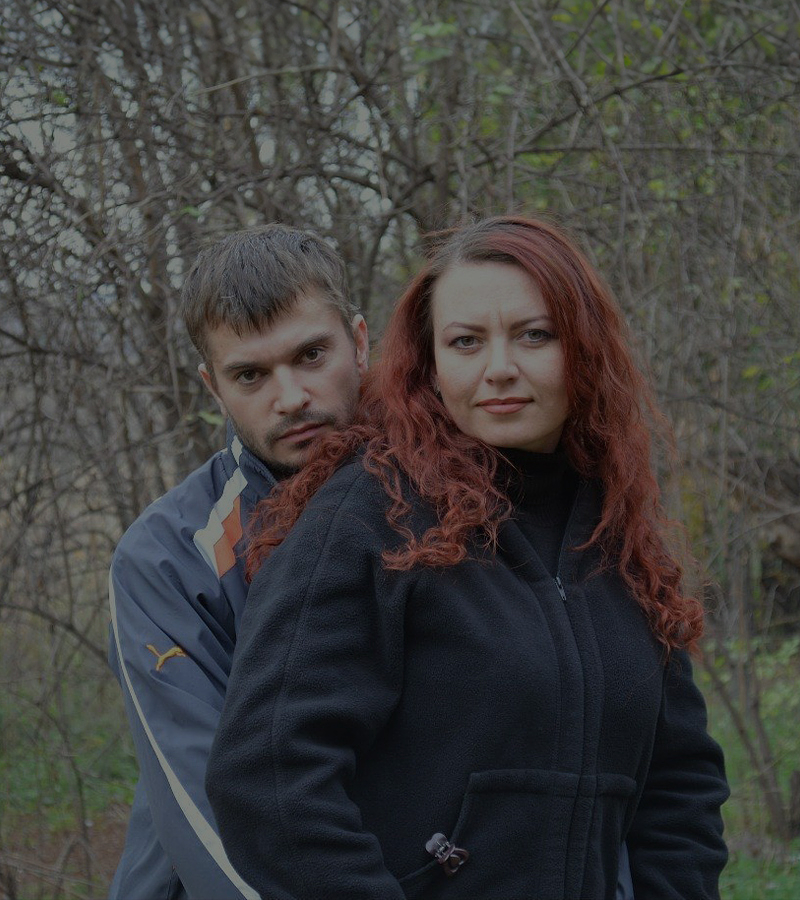The Museum of Civilian Voices
In 2014, an armed conflict broke out in eastern Ukraine. Back then, Rinat Akhmetov was the first to come to the aid of the affected people. He provided assistance unprecedented in its scale and saved 3.5 million lives. And now, to preserve the stories, accounts of these people, the Museum of Civilian Voices has been created.
The museum has already collected about 2,000 stories of residents of Donetsk and Luhansk regions and internally displaced persons, and by 2025, the Foundation plans to document 100,000 stories. It is an archive of true stories of Civilians told in the first person by own voices of people who have gone through the horrors of the armed conflict.
Psychologists who help people cope with the war trauma are involved in collecting stories for the Museum. Since 2014, more than 60,000 different-age residents of the east of the country have received psychological support from the Foundation. Olena Lukyanchuk is one of the Foundation’s psychologists who prepared a set of materials on psychological assistance. Let us present her professional viewpoint to you.
In Budapest, on the embankment of the Danube River, not far from the parliament building, there are 60 pairs of worn-out cast-iron shoes. These are sculptural copies of the shoes of the Holocaust victims, who met death at that place shortly before the end of the Second World War. Perhaps some of you saw and someone read about this memorial.
It was erected in 2005 in memory of many men, women and children killed in the last year of the war by the Hungarian Nazi Arrow Cross Party militants. The opening of the monument took place on 16 April – the Day of Remembrance of the Holocaust Victims in Israel (International Remembrance Day – 27 January). In 2014, Hungary officially admitted responsibility and made a public apology for the genocide of Jews.
This is an example of how collective trauma is treated by society and becomes part of history.
Trauma is an extraordinary event, usually life threatening for an individual or for people, which later becomes a separate block of memories. It is not something people want to remember or talk about. It is not so easy to integrate it into your life story, precisely because it is unpleasant, painful and rejected by the brain, as something that must be forgotten and no longer taken out.
It is because of this painful nature that people are often unable to integrate traumatic events into their life story on their own. It is a process of constant rejection, which in psychology is called “repression”. It takes up an enormous amount of energy from the brain or psyche.
A person with an untreated trauma quickly gets tired, feels apathetic, absent-minded, unhappy, since everything that reminds of the trauma is blocked by the psyche, rejected and cut out of reality. Therefore, anything in life that can bring a memory of trauma must be deleted, while this includes relationships and opportunities, and places. A person begins to suffer precisely from the fact that life is down to avoiding any mention of trauma, painful emotions and pain, accordingly. Such a life often does not lead a person to development and happiness, but rather closes in on loneliness and stagnation.
There is a lot of information about how the brain of people who survived trauma changes physiologically. We become different even genetically. These are processes of epigenetics, when the DNA code does not change, but gene expression is modified. Tiny marks are added or removed from our DNA in response to changes in the environment we live in.
A collective trauma is also an extraordinary event threatening to people’s life or well-being, which happens not to one person, but to a group of people. Accordingly, the larger the group, the more people begin to live their lives focusing on the avoidance of pain.
That is exactly why the trauma should be built into the story of life. The pain and all feelings should be let go out for the trauma to become an event in life, sad and grievous, but an event that you can be sad about, cry about, but it cannot be avoided.
The Rinat Akhmetov Foundation’s project the Museum of Civilian Voices is a unique psychotherapeutic initiative that helps people treat their traumas, helps us as a society stop avoiding pain and horror, but accept, mourn and embed the war in Donbass into our reality, into our Ukrainian history.
It is important to understand that, whatever happens, a couple of million people are direct witnesses of the war. They live their lives every day and make up 10% of our society. Another 30% are indirect witnesses of the war, their relatives, friends, and acquaintances, people who write about and work with the consequences of the war. In other words, it is too late for us to pretend that the war is somewhere far away. It is close, it is our history, our reality, and it is time to talk about it and do something about it.
For this reason, the Museum of Civilian Voices is not just a project. It is a process of society’s recovery and an attempt to collect an archive of stories, the voices of witnesses of the phenomenon called “the war in the east of our country”.
If the armed conflict has affected your life, you can also contact the Foundation’s psychologists for help by calling the hotline: 0800509001.
Your story should be known too! Tell it to the world! Follow the link https://civilvoicesmuseum.org/en/my-story and fill out a short questionnaire to make your input in the preservation of memory.






.png)



